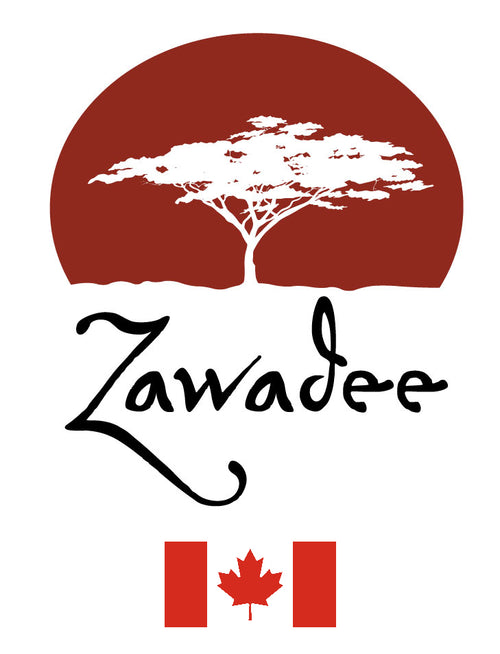Getting to Know Africa: Mount Kilimanjaro
When you think of the unparalleled natural beauty of Africa, Mount Kilimanjaro no doubt springs to mind.
Located in northern Tanzania, near the town of Moshi, Mount Kilimanjaro’s snow-capped peak juts up dramatically from the midst of a vast savanna. It’s made up of three volcanic cones—Kibo, Mawenzi and Shira. Kilimanjaro is Africa’s highest peak at 5,895 meters (19,341 ft.), and is the highest free-standing mountain in the world—meaning it’s not part of a mountain chain, which makes it all the more striking.
Kilimanjaro is Africa’s highest peak at 5,895 meters (19,341 ft.), and is the highest free-standing mountain in the world—meaning it’s not part of a mountain chain, which makes it all the more striking.
 The protected site of Kilimanjaro National Park is made up of the mountain, the surrounding savanna and the forest of the national park. These gorgeous 75,575 hectares are comprised of unique zones of vegetation and numerous endangered species. It was declared a UNESCO World Heritage site in 1987.
There are huts and campsites on the mountain, so you can plan to stay right where the action is. Kilimanjaro is just 300 kilometers from the equator, so its climate is pretty consistent throughout the year. January and February are the warmest and driest months of the year, so are prime times to visit—especially if you plan on seeking the summit.
The protected site of Kilimanjaro National Park is made up of the mountain, the surrounding savanna and the forest of the national park. These gorgeous 75,575 hectares are comprised of unique zones of vegetation and numerous endangered species. It was declared a UNESCO World Heritage site in 1987.
There are huts and campsites on the mountain, so you can plan to stay right where the action is. Kilimanjaro is just 300 kilometers from the equator, so its climate is pretty consistent throughout the year. January and February are the warmest and driest months of the year, so are prime times to visit—especially if you plan on seeking the summit.

- The first people to officially reach the summit were German geologist, Hans Meyer, Ludwig Purtscheller and a local called Lauwo in October 1889.
- In August 2014, Karl Egloff completed a run up the Umbwe Route and descent via Mweka in just 6 hours, 56 minutes and 24 seconds.
- Even though you officially need to be at least ten to climb Kilimanjaro, in January 2008, seven-year-old Keats Boyd from Los Angeles reached the summit.
- Officially the oldest person to reach the summit is, Robert Wheeler, who accomplished this feat in October 2014.
About 35,000 people attempt to climb Kilimanjaro each year, but not everyone’s successful. It’s a mountain you can climb without fancy equipment, or technical climbing skills, which is appealing to many.
But don’t think you can waltz up the mountain without preparation. You need to climb with an organized trek, with a licensed mountain operator. There are several different routes to the top with varying degrees of difficulty—but you have to stick to these predetermined routes.
The climb is not without risks. By some estimates, about a third of the climbers don’t make it to the top. Some of these climbers succumb to dangerous altitude sickness, and officially two to three climbers die from this each year. But total deaths are higher than that—with some climbers falling to their death, succumbing to hyperthermia, or other accidents. But fear not—if you’re not the overly-adventurous type, you can opt for a tamer day hike instead. What's In A Name? While it isn't clear where the name "Kilamanjaro" originated, one theory is that it is a mix of the Swahili word "kilima" - which means mountain - and the KiChagga (a Bantu language spoken in some parts of Tanzania) word "njaro" - which loosely translates as "whiteness". Another theory is that Kilimanjaro is the result of a European mispronunciation of a KiChagga phrase meaning "we failed to climb it". That's funny!

- The Savanna bushland,
- The sub-montane agro forest,
- The montane forest belt,
- The sub-alpine moorland and alpine bogs, and
- The alpine desert.
 The Future
The distinctive white top of Kilimanjaro may not be here in the near future. The continuous ice cap is shrinking. Since 1912, Kilimanjaro has lost 82% of its ice cap and since 1962 it’s lost 55% of its remaining glaciers. Some predict the glaciers will disappear completely within a few decades.
The Future
The distinctive white top of Kilimanjaro may not be here in the near future. The continuous ice cap is shrinking. Since 1912, Kilimanjaro has lost 82% of its ice cap and since 1962 it’s lost 55% of its remaining glaciers. Some predict the glaciers will disappear completely within a few decades.










 Originating from the East African coastal area, this is a lovely dish for hot summer days. The word "kuku" means chicken in Swahili. Most believe that "paka" means the dish is made with coconut milk, although "paka" is also a Punjabi word meaning delicious. And, it is!
Although we particularly enjoy this family recipe, remember you can search online and find lots of variations on this dish. An online recipe site we use over and over again is
Originating from the East African coastal area, this is a lovely dish for hot summer days. The word "kuku" means chicken in Swahili. Most believe that "paka" means the dish is made with coconut milk, although "paka" is also a Punjabi word meaning delicious. And, it is!
Although we particularly enjoy this family recipe, remember you can search online and find lots of variations on this dish. An online recipe site we use over and over again is  This water sustains numerous animals in an otherwise parched land. It’s an oasis for the abundant wildlife from the surrounding harsh, dry landscape.
This concentrated lushness has made the Okavango Delta one of the greatest wildlife viewing destinations in the world. There’s beautiful scenery and stunning animals at every turn.
It’s no wonder that the Okavango Delta got the cool distinction of being listed as the 1,000th UNESCO
This water sustains numerous animals in an otherwise parched land. It’s an oasis for the abundant wildlife from the surrounding harsh, dry landscape.
This concentrated lushness has made the Okavango Delta one of the greatest wildlife viewing destinations in the world. There’s beautiful scenery and stunning animals at every turn.
It’s no wonder that the Okavango Delta got the cool distinction of being listed as the 1,000th UNESCO 


 Cool Ways to Explore
There is plenty to see in the Okavango Delta. Here are some exciting ways to explore the area:
Cool Ways to Explore
There is plenty to see in the Okavango Delta. Here are some exciting ways to explore the area:

 This particular recipe originates from
This particular recipe originates from 





 We guarantee you'll love this dish. Some recipes we've seen suggest a dollop of yogurt on top just before serving. It is delicious!
We love sharing our family recipes with you but please remember you can search online and find lots of variations on this dish and other terrific African recipes. An online recipe site we use over and over again is
We guarantee you'll love this dish. Some recipes we've seen suggest a dollop of yogurt on top just before serving. It is delicious!
We love sharing our family recipes with you but please remember you can search online and find lots of variations on this dish and other terrific African recipes. An online recipe site we use over and over again is 
 There are many varieties of Sambal, showing up from Sri Lanka to South Africa, incorporating different ingredients - cucumber, tomato, onion and even pineapple! Most Sambals have a common trait - they are crisp and fresh versions of a slaw salad.
We love sharing our family recipes with you but please remember you can search online and find lots of variations on this dish and other terrific African recipes. An online recipe site we use over and over again is
There are many varieties of Sambal, showing up from Sri Lanka to South Africa, incorporating different ingredients - cucumber, tomato, onion and even pineapple! Most Sambals have a common trait - they are crisp and fresh versions of a slaw salad.
We love sharing our family recipes with you but please remember you can search online and find lots of variations on this dish and other terrific African recipes. An online recipe site we use over and over again is 
 Friday, October 2nd, 2015: 8 to 10 p.m. - St. Mark's Anglican Church
Canadian Jazz Icon
Friday, October 2nd, 2015: 8 to 10 p.m. - St. Mark's Anglican Church
Canadian Jazz Icon 
 Bravo Niagara! and The Market @ The Village co-present “Food for the Soul,” bringing together vendors of local chefs, food trucks, music, artisans, local produce, Wineries of Niagara-on-the-Lake and more in a celebration of the culinary contributions of people of African descent.
Bravo Niagara! and The Market @ The Village co-present “Food for the Soul,” bringing together vendors of local chefs, food trucks, music, artisans, local produce, Wineries of Niagara-on-the-Lake and more in a celebration of the culinary contributions of people of African descent.


 "In its desire to celebrate, commemorate and examine the experiences of persons of African descent in Canada, the festival aligns with the 70th Anniversary of UNESCO and the 21st Anniversary of the International Scientific Committee UNESCO Slave Route Project: Resistance, Liberty, Heritage.
The North Star Festival: Voices of Freedom will contribute to the ongoing work to unite the Niagara Region in a global movement of promoting deeper cultural understanding, peace and dialogue for current and future generations."
"In its desire to celebrate, commemorate and examine the experiences of persons of African descent in Canada, the festival aligns with the 70th Anniversary of UNESCO and the 21st Anniversary of the International Scientific Committee UNESCO Slave Route Project: Resistance, Liberty, Heritage.
The North Star Festival: Voices of Freedom will contribute to the ongoing work to unite the Niagara Region in a global movement of promoting deeper cultural understanding, peace and dialogue for current and future generations."